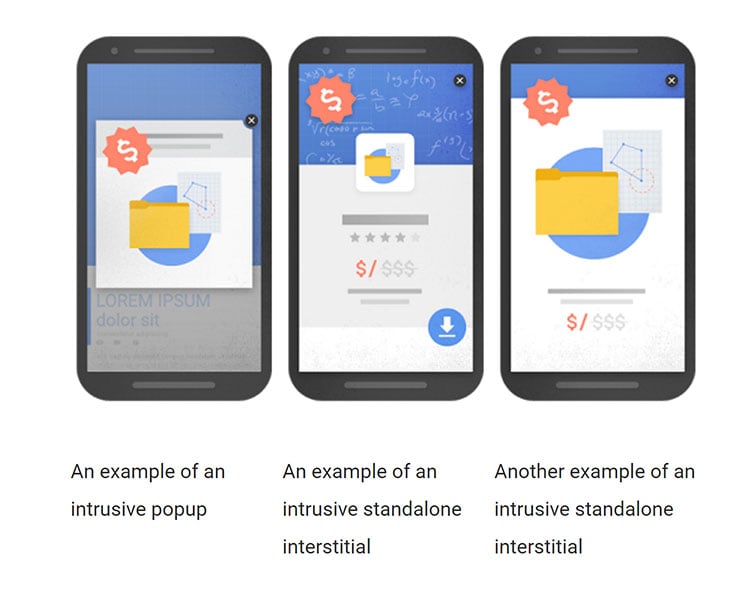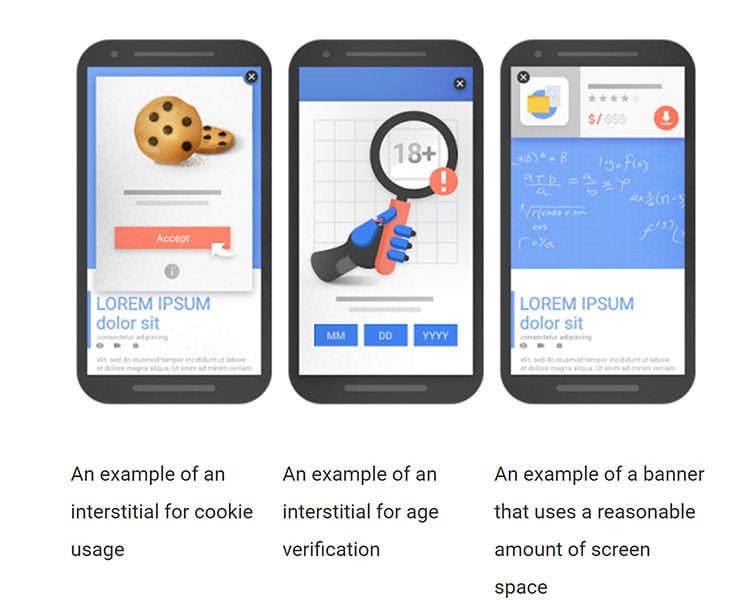Know Why Google Says Get a Mobile Optimized Website Now
With most marketers reporting that mobile devices account for more than 50% of their annual traffic, it’s now more important than ever to ensure your...

Google is back at it again, working to make the internet a more user friendly and inviting place. Much to the dismay of business marketers around the globe, the internet search giant recently announced, new stricter guidelines that mobile sites must follow to avoid being diminished in mobile search engine results pages (SERP).
In an August blog post on the Google Webmaster Central Blog by Product Manager, Doantam Phan, the company warned that by January 10, 2017 companies that use “intrusive” mobile pop up ads on their mobile websites that interfere with user experience may not rank as highly in search.
In the post, Phan stated quite clearly:
“Pages that show intrusive interstitials provide a poorer experience to users than other pages where content is immediately accessible. This can be problematic on mobile devices where screens are often smaller. To improve the mobile search experience, after Jan. 10, 2017, pages where content is not easily accessible to a user on the transition from the mobile search results may not rank as highly.”
At issue is the use of interstitial advertising on mobile platforms, and their interference with content consumption. Interstitials are full-screen ads that block out an application or mobile web page’s primary content. They often freeze on the screen for a select number of seconds until an “x” out button presents itself.
Interstitial ads overcome mobile’s biggest hurdle, limited real estate, by consuming the entire screen. Unlike banner ads, interstitials force users to interact by clicking out or clicking through an ad. Due to these actions, interstitials grab users’ attention and maintain high conversion rates.
One of the biggest negatives of using interstitial ads is that they hinder users from completing a desired action by forcing them to stare at the ad until they can click out. There is a fine line that marketers walk when using this type of mobile advertising. Many users find them irritating, so integrating too many of these mobile ads may lead to app uninstalls or clicks out of webpages.
Google’s negative response to interstitial advertising is not a complete surprise, considering the frustration that many feel about how intrusive these type of pop ups can be and how these ads can diminish the user experience.
For Google, user experience has become top priority.
Phan provides some examples of the types of ads that make content less accessible to a user:

This is not the first time that the search giant has gone after interstitial ads that disrupt user experience. In September of last year, on another Google Webmaster Central post, it announced that it would downgrade any mobile site that displayed full screen ads that prompted users to download the app for a site.
By now, we should all be pretty familiar with adjusting to how Google changes the rules regarding to search.
When the “Emperor” speaks from on high, we must adapt or die.
While this newest change will disrupt the pop up party taking place on many mobile sites, it is not as bad as it seems, and will certainly make user experience more tolerable.
Let’s be honest, if you are like me, and I bet you are, you hate these things popping up and interfering with the content that you are interested in consuming. I get frustrated, and immediately click off of these ads. Put too many of them on your site and I won’t come back
In the grand scheme, this is a good change.
The other thing to take into account is that, Google is not outlawing everything. Phan provides some guidance as to what is acceptable. From the post:
By contrast, here are some examples of techniques that, used responsibly, would not be affected by the new signal:

As a site owner, you will have until early January to clean up your act. If you are a user of interstitial advertising, make sure you work with your developers to look at your site and most importantly remember to research your options to adapt to these new standards for your mobile platform.
Lastly, as Phan points out, this is only one signal of many that determines search ranking, and most importantly content counts.
“The intent of the search query is still a very strong signal, so a page may still rank highly if it has great, relevant content.”
Image(s) Credit: Photos by Google Webmaster Central Blog

With most marketers reporting that mobile devices account for more than 50% of their annual traffic, it’s now more important than ever to ensure your...

For businesses looking for a more streamlined way to improve communication, Google may have the answer.

The need to become more efficient and productive at work is like searching for Jimmy Hoffa’s grave. Just when you think you have it figured out,...